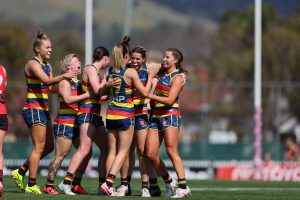Cricket’s first day-night Test will be the centrepiece of an enhanced relationship between Cricket Australia and New Zealand Cricket.
To be played in Adelaide from November 27 to December 1, the historic clash has been created to drive attendances and television ratings.
A pink ball that has been developed over a decade of research and trials will be used to ensure greater visibility for players and spectators.
Australia and New Zealand will also continue to build on the increased rivalry created during a spectacular ICC Cricket World Cup when, as finalists, the teams played in front of a sell-out MCG crowd of more than 93,000.
The Chappell-Hadlee Trophy will return to centre stage, with six one-day series over the next four years.
New Zealand will host four of the three-match series with another two in Australia, ensuring 18 matches in all.
Cricket Australia CEO James Sutherland said playing a day/night Test was all about the fans, allowing more to attend the newly developed, world class Adelaide Oval or watch on television, particularly in non-holiday periods.
“One of the global challenges with Test cricket is that most of the matches outside holiday periods are played on week days, in the middle of the day when people are at work and kids are at school,” Mr Sutherland said.
“By shifting the playing times each day’s play can go into the evening and allow people to come in after work or after school to attend the last few hours of play, but also when they get home in other parts of the world or other parts of the country, they can watch the game on TV.
“The Perth Test match is a great illustration of that. It’s fanatically watched on the eastern seaboard of Australia every year because of the time difference. Our television ratings are something like 40 per cent more for the whole country.”
Mr Sutherland is satisfied the pink ball has been developed to Test match standard and said both teams would have ample opportunity practice and play lead-up matches under lights before the Test.
“We’re really confident with the work that’s been done over the past few years,” Mr Sutherland said. “We’ve had two successive seasons of Sheffield Shield cricket where pink balls have been trialled.
“We’ve worked very closely with the Australian Cricketers’ Association and Kookaburra in the development of the ball and its continued upgrade to make it ready.
“We’ll make sure that the players from both teams are well prepared.
“We’re working really closely with New Zealand Cricket in giving them the right tour matches and preparation before the ultimate day/night Test which is the last of the series. And similarly with our players. A number of our players have already had experience through Shield cricket. But those that haven’t, we’ll be finding opportunities for them to play with the pink balls and also to play under lights as well.”
Mr Sutherland praised New Zealand Cricket for its co-operation and said it was fitting that Australia and New Zealand should develop such strong ties during the centenary year of the ANZAC.
“It’s been a big year for cricket here in Australia and New Zealand, having co-hosted a really successful World Cup and both sides having performed so well,” Mr Sutherland said.
“But I think there’s even greater significance when you consider this is the commemoration of the centenary of ANZAC this year and it reminds us of the great bond between the two countries, a great rivalry on the cricket field but a great bond off it.”
NZC chief executive David White said there were good reasons for being part of the day/night Test initiative, and even better ones for cultivating a closer working relationship with Cricket Australia.
“In today’s world, Test cricket is relatively inaccessible to the public – particularly during the non-holiday and non-weekend periods,” he said.
“This is a concept that allows more people to access the event, either by direct attendance or by watching on television.”
Mr White said the day/night format would not “take over” Test cricket but was another step forward in the constant evolution of the game.
“Since the first Test in 1877 there have been numerous changes to the laws and rules in an effort to ensure the game remains relevant – and this is another.
“As administrators we owe it to the game to keep exploring ways of moving forward.”
Mr White congratulated CA for being at the forefront of such an exciting innovation, and welcomed the agreement to play more cricket against Australia.
“It’s a significant breakthrough,” he said. “NZC and CA worked well together as co-hosts of the ICC Cricket World Cup and the goodwill engendered there has played a major role in this latest agreement.”
Nine Entertainment Company Chief Executive Officer David Gyngell said: “Bring it on! Evolution is everything in elite sport and its coverage, and it’s up to us all to think outside the square and meet these challenges.
“My congratulations to James Sutherland and Cricket Australia and our friends at New Zealand Cricket for having the foresight and mettle to take it on, and for the support of team captains Michael Clarke and Brendon McCullum.
“Let’s give it a red hot go and see what develops.”
Commonwealth Bank Test Series schedule
| Commonwealth Bank Test Series v New Zealand | ||
| Thurs 5 Nov – Mon 9 Nov | Australia v New Zealand | Gabba |
| Fri 13 Nov – Tues 17 Nov | Australia v New Zealand | WACA |
| Fri 27 Nov – Tue 1 Dec | Australia v New Zealand | Adelaide Oval |
| Commonwealth Bank Test Series v West Indies | ||
| Thurs 10 Dec – Mon 14 Dec | Australia v West Indies | Blundstone Arena |
| Sat 26 Dec – Wed 30 Dec | Australia v West Indies | Melbourne Cricket Ground |
| Sun 3 Jan – Thurs 7 Jan | Australia v West Indies | Sydney Cricket Ground |




